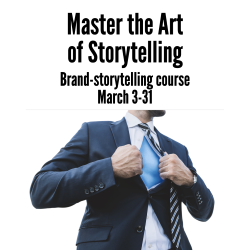People learn through metaphor
When my grandfather first saw a car, he didn’t think “automobile.” He thought, “That’s a carriage that moves without a horse — it’s a horseless carriage.”

He added to his knowledge by comparing the new concept to something he already understood. In other words, he learned through metaphor.
“Metaphor is for most people a device of the poetic imagination and the rhetorical flourish — a matter of extraordinary rather than ordinary language,” write George Lakoff and Mark Johnson in Metaphors We Live By.
“On the contrary … metaphor is pervasive in everyday life, not just in language but in thought and action. Our ordinary conceptual system, in terms of which we both think and act, is fundamentally metaphorical in nature.”
Metaphor, in other words, is how we think.
Your brain on metaphor
Metaphors work because they compare the concept to something more familiar: cars to horse-drawn carriages, for instance. That helps people understand new, complex or conceptual information — computers, the internet, love — by means of something they already understand.
That makes metaphors shortcuts to understanding.
We use metaphor all the time:
- We use 50 metaphors per thousand words when we speak, estimates L. Cameron in The Cambridge Handbook of Metaphor and Thought (1980).
- TV presenters use even more: one in every 25 words, according to Brian F. Bowdle, in The Career of Metaphor (2005).
- Over a 60-year life span, hypothesizes S. Glucksberg (“Metaphors in conversation,” 1989), one person uses millions of metaphors and other figures of speech.
As Lakoff and Johnson point out, we compare:
- Arguments to war (Attack your position. Claims are indefensible. Criticisms were right on target. Shoot down arguments.)
- Time to money (spending time, wasting time, saving time, investing time, costing time)
- Computers to offices (desktops, files, folders, documents, notepads)
In our brains, love is a journey, problems are puzzles and the internet is a city.
Compare complex concepts
If metaphor, simile and analogy is how we think, then writers can help people think through metaphor.
That’s the approach Richard Preston used in this extended metaphor in The Demon in the Freezer. The metaphor helps people wrap their brains around the science of smallpox:
If a smallpox brick were the size of a real brick, then a cold-virus particle would be a blueberry on the brick. But smallpox particles are still extremely small; about three million smallpox bricks laid down in rows would pave the period at the end of this sentence.
“Human thought processes are largely metaphorical,” write Lakoff and Johnson. “The human conceptual system is metaphorically structured and defined. … Metaphor is as much a part of our functioning as our sense of touch, and as precious.”
Bottom line: If you’re communicating technical, scientific or complicated information, use metaphor.
How can you communicate complex concepts?
Call it the magic of metaphor. Metaphor persuades far better than literal language. It lets you say in five words what would otherwise take five paragraphs to explain. It makes readers’  brains light up, helps them think more broadly about your message — even (ahem!) makes you look more attractive.
brains light up, helps them think more broadly about your message — even (ahem!) makes you look more attractive.
Learn to charm readers with analogies and comparisons at Master the Art of Storytelling, our business-storytelling workshop starting March 3.
You’ll learn which kinds of metaphors to choose, which to avoid and where to place them in your message. Plus, you'll craft a compelling metaphor with our fill-in-the-blanks formula.
Save up to $100 with our group discounts.
